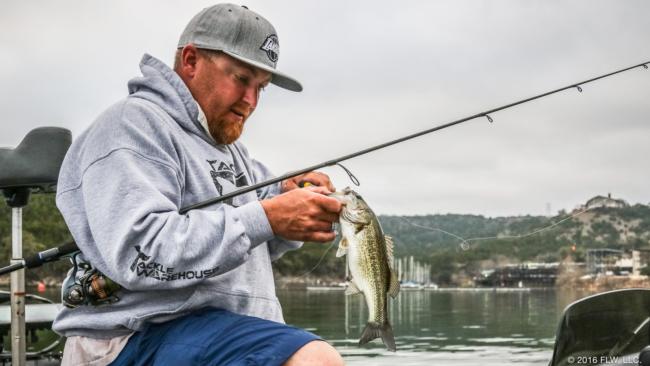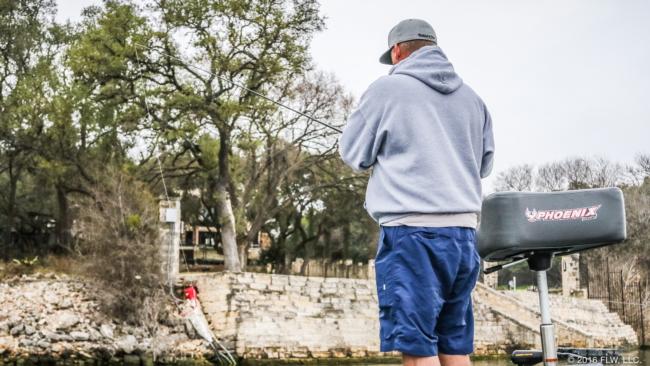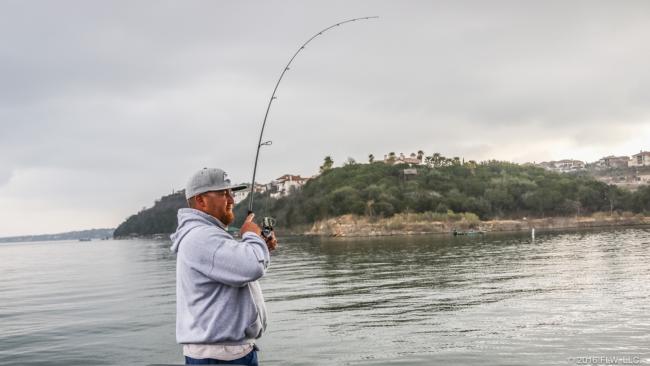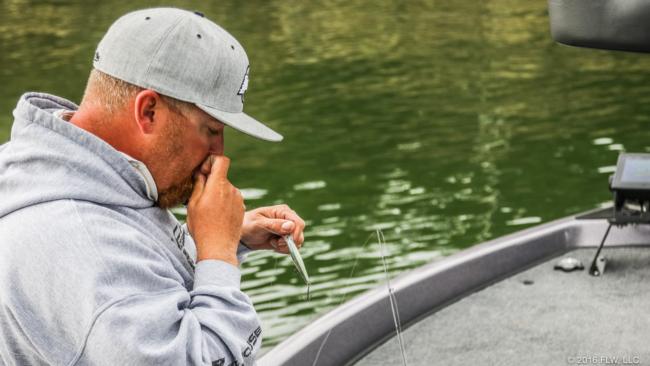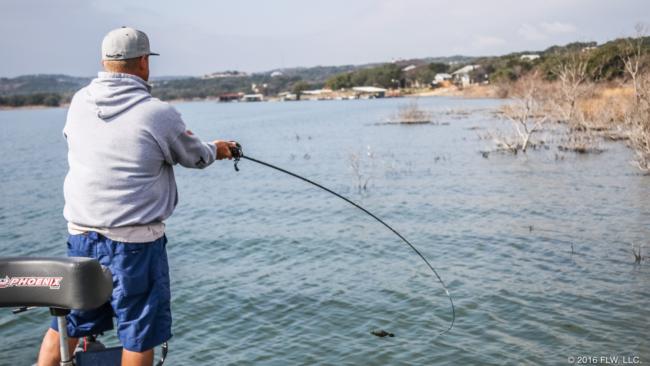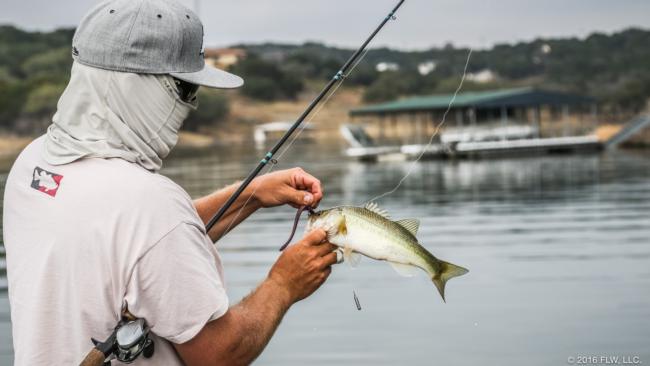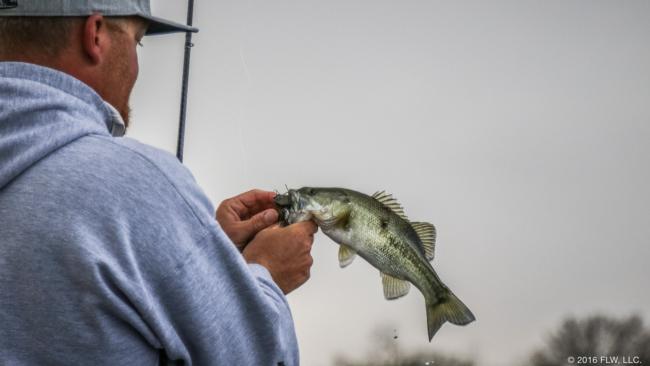Tackling Travis with Rookie Wade Curtiss
The first-year California pro looks to rebound after a tough opener at Guntersville
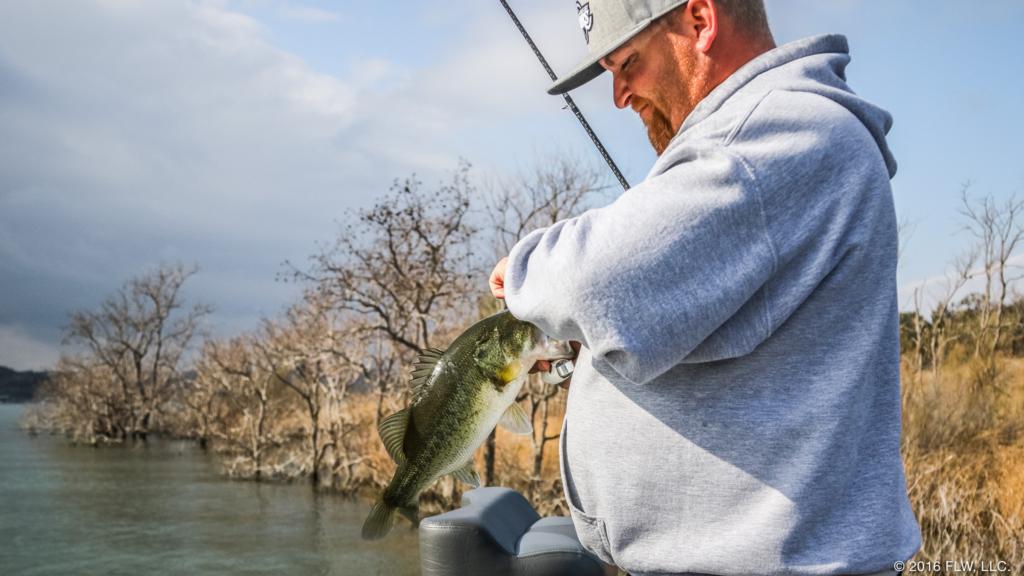
Sometimes you make significant, life-altering decisions based on analytics, data, and cold, hard logic. Other times, it’s as simple as getting the feeling that now is the right time to roll the dice and see what happens. For first-year FLW Tour pro Wade Curtiss, the decision to step up from the Costa FLW Series to the FLW Tour falls squarely in the latter category. The 37-year-old Meadow Vista, Calif., angler has fished Costa events since 2008, and he’s had success doing so, with three top-10 finishes, including a win at the 2015 California Delta event.
Still, it’s a big leap – financially, competitively, geographically, mentally – from fishing regional Costa events to competing on the FLW Tour against some of the best anglers on the planet. So what makes an angler decide now is the time? Just a feeling, says Curtiss. Nothing more complex than that.
“I just figured it was time to try something new, take up a new challenge,” says Curtiss as he casts a drop-shot rig parallel to a steep bluff on the upper end of Lake Travis on the first practice day before the 2017 FLW Tour event presented by Quaker State at Lake Travis. “I’d been fishing the Costa events for a while, and I just wanted to do something different. I’d been thinking about trying the FLW Tour, and decided now was probably as good a time as any.”
This is the first time Curtiss has fished Lake Travis, and he’s excited about his chances in the tournament. Travis is a deep, serpentine, 18,622-acre flood-control lake on Texas’ Colorado River northwest of Austin, and it reminds Curtiss of the typical western lakes he fishes back home.
“It’s set up a lot like them. If I can find fish here I’m going to concentrate on the upper end of the lake where it’s relatively clear,” says Curtiss. “I think a lot of the guys will be going downriver where it’s a little dirtier.”
Day one of practice has dawned calm, overcast and 66 degrees. The water, at 59 degrees, is slightly off-color. Curtiss begins the day concentrating on docks and gradient breaks along the steep, rocky shoreline near the dam. The Travis shoreline is heavily developed; docks and boathouses are numerous. Curtiss, alternating between a drop-shot and a wacky rig, picks up one small bass before we move locations, this time to a flat just off the main river channel. He throws a drop-shot for a few minutes before moving once again to a gradually sloping point dotted with half-submerged bushes.
In terms of a particular fishing style, Curtiss considers himself mainly a junk fisherman, and his practice pattern reflects that. As the morning progresses, he moves from drop-shots, wacky rigs, jerkbaits and swimbaits along steep bluff faces, to dock-skipping jigs, to tossing a vibrating jig through submerged brush along shallow, gradually sloping shorelines in 3 to 6 feet of water. Curtiss picks up his first keeper this way, a chunky 2-pounder. He tosses it back in the water and talks some more about the experience of being a rookie on the Tour.
“The competition is going to be a lot tougher, obviously, and I’ll be fishing a lot of new lakes I’ve never seen,” he says. “There’s more pressure there, and there’s certainly more pressure financially. It makes it tricky to figure out how to fund fishing the whole Tour. I haven’t quite figured out how to fund the entire season, but I’ll just play it by ear, see what happens and hopefully good things will happen. It’ll be an interesting challenge, but I’m looking forward to it.”
One big plus Curtiss has is his relationship with FLW superstar Cody Meyer. Curtiss and Meyer, along with fellow FLW pro Jason Johnson of Georgia, are traveling and rooming together while on the Tour, and according to Curtiss, the experience is a big help.
“I’ve known Cody for quite a while,” says Curtiss. “He’s a good guy. We actually only live about two miles from each other. We started fishing against each other in tournaments out here six or seven years ago and became friends, and when I told him I was going to fish the Tour this year he offered to room with him. It’s been a great experience so far.”
Having that support helps with one of the most difficult parts of being a touring pro – the travel.
“Coming from the West Coast, you don’t get to see your family much while it’s going on,” says Curtiss, who leaves his wife and 14-month-old baby boy, Wyatt, back in California when he’s fishing the Tour. “A lot of these guys can go home after a tournament, but I don’t have the luxury of doing that after every single tournament.”
The sheer logistics of being a West Coast angler fishing primarily eastern locales can be daunting. Curtiss says most West Coast guys will keep their truck and boat somewhere back east between tournaments while they fly home to see their families, that is, if they have the time and money.
“I couldn’t after Guntersville, but after Travis I’ll fly home for 11 days,” says Curtiss. “I’ve got a buddy in Georgia, so I’ll leave the boat at Lake Lanier and he’ll take me to and from the airport. I think that’s the way most of the West Coast guys do it, at least the ones who are married.”
Around noon we make a run toward the lower end of the lake, where Curtiss goes back to flipping docks and submerged brush. The weather alternates between partly sunny and overcast, and the water temperature has risen a bit to 60 degrees. The lake level, at 682 feet above sea level, is higher than normal, and Curtiss keys in on working a drop-shot in 4 to 6 feet of water along the shoreline and boathouses. He begins picking up a few small bass as the sun goes in and out of the cloud cover.
Curtiss freely admits his inaugural experience as a Tour pro at Guntersville was, in a word, miserable. He caught two fish, didn’t make the first cut, and to top it off he broke a finger while trying to free his boat’s Power-Pole after it got stuck on the ramp. But Curtiss is an optimist, in spite of the outcome at Guntersville, and his philosophy going forward is to just keep putting one foot in front of the other one.
“I’m just hoping to have enough success to be able to continue doing this next year,” he says. “It’d be great to make a really good living at it, and some guys have, but even if I don’t get there I’d rather be poor and doing what I love than be making money and hating it.”
